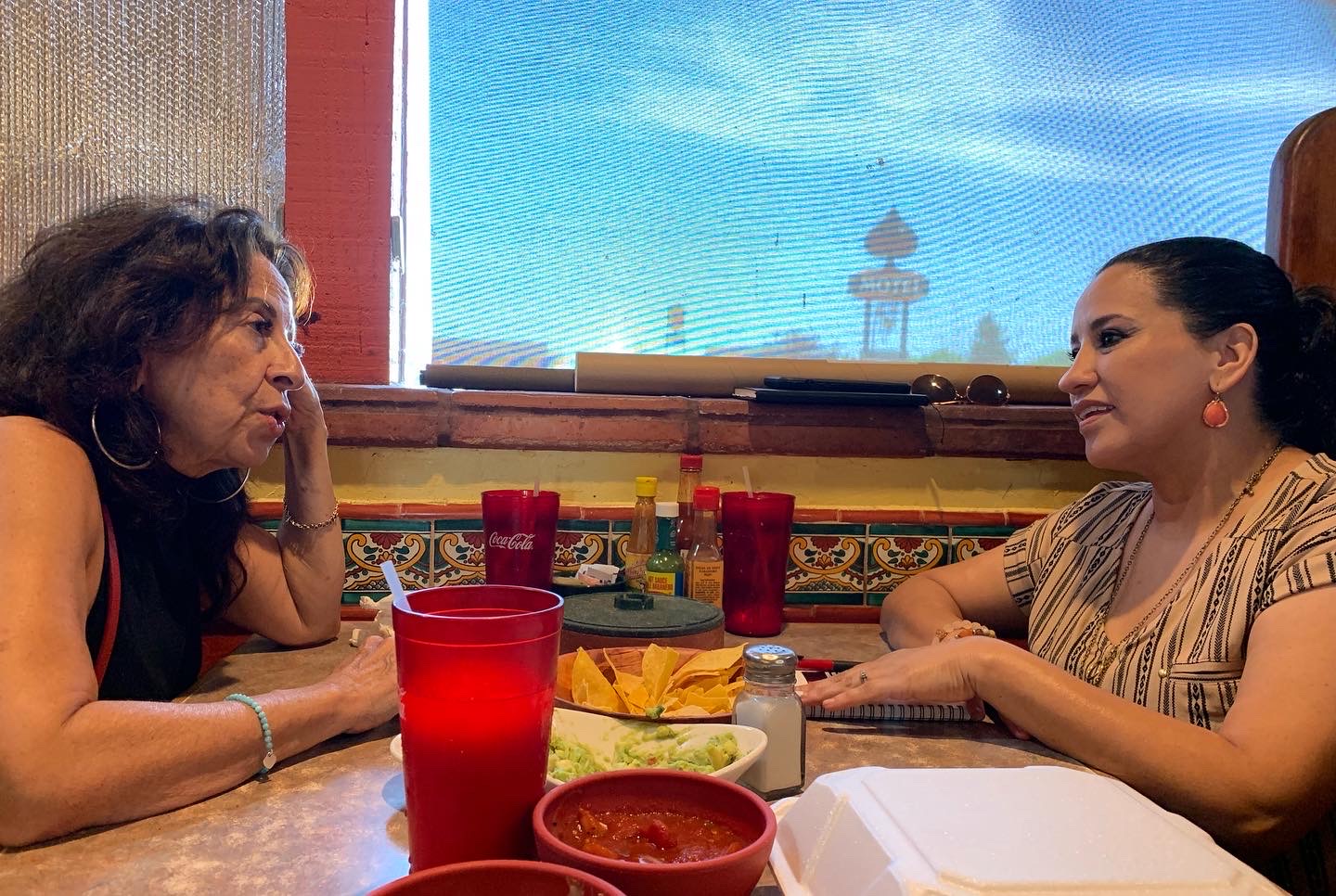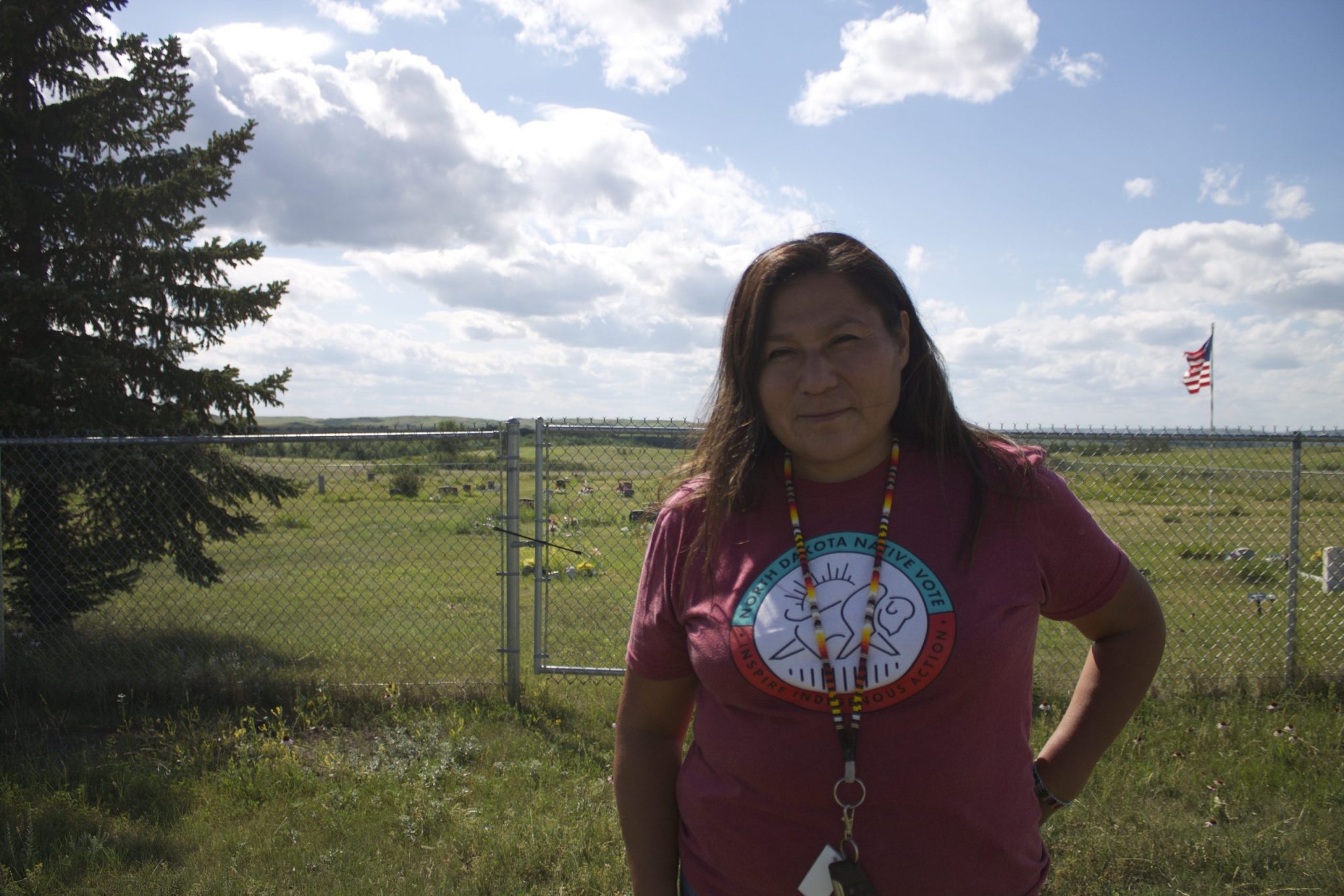

An oil derrick in North Dakota (Reynaldo Leaños Jr./Futuro Media)
By REYNALDO LEAÑOS JR.
North Dakota saw the biggest growth rate of Latinos and Latinas in the United States between 2010 and 2020, according to the U.S. Census. Jobs, mostly in the oil and gas industry, drew many people to the state within the last decade.
However, with oil and gas often comes controversy, especially for the environment and Indigenous communities directly impacted by the industry.
Andres Murillo moved to North Dakota from California three years ago. For Andres, the main attraction was clear: making more money.
“Financially, I’m doing well,” he said. “I don’t feel like I’ve been on the verge of not having enough, compared to back home.”
North Dakota also became a place where Andres and others have felt welcomed for their political beliefs.
“When I left California, I became a Republican, and I kind of switched over from liberal because I didn’t agree with most of their ideas,” he said. “Nobody’s going to tell you anything, nobody’s going to scream at you for your opinion. I haven’t met anybody that’s told me that I’m dumb, or that I’m just white because of the party that I’m going with.”
It was actually an oil boom, which started around 2008, that caused a population boom in North Dakota. The state is the third largest crude oil producer in the country, and the industry has created tens of thousands of well-paying jobs. It also generates billions of dollars every year.


Marina Carillo, right, has been a part of the oil and gas industry in North Dakota for about seven years. She’s helped recruit people to the industry, many of them Latinos and Latinas. (Reynaldo Leaños Jr./Futuro Media)
Marina Carillo has been a part of the North Dakotan oil and gas industry for about seven years. She has helped recruit people to the industry, many of them Latinos and Latinas, and she has her own business.
“Where you’ll see more drilling is where more Hispanics are,” she said.
But some communities are wary of this all-powerful industry. Aggressive extraction methods like fracking are considered deeply destructive by environmentalists and Indigenous communities who have been living in North Dakota long before the boom.
Lisa DeVille, an Indigenous environmental activist, lives on the Fort Berthold Reservation. About 20 percent of all the oil and natural gas that North Dakota produces is extracted from this reservation.
For years, Lisa has been trying to raise awareness about the damages that the oil and gas industry is causing in her community, from brine spills to the destruction of natural habitats and more.
“The industry has more of a voice than our own people have here,” she said.


Lisa DeVille, an Indigenous environmental activist, lives on the Fort Berthold Reservation. For years, Lisa has been trying to raise awareness about the damages that the oil and gas industry is causing in her community, from brine spills to the destruction of natural habitats and more. (Reynaldo Leaños Jr./Futuro Media)
Lisa has witnessed both the oil boom and the population growth that followed. And a lot of the newly arrived are Latinos and Latinas.
“Anyone that comes here because of oil, that’s only what they’re here for. Do they care about the land?” she asked. “So no matter who comes here, it’s all about the money, not sitting down and understanding why this land is important to us.”
The oil and gas industry has generated economic opportunity and hope for a more secure future for some, but oftentimes at the expense of others who were here before and the environment.
***
Latino USA with Maria Hinojosa, produced by Futuro Media, is the longest-running Latino-focused program on U.S. public media.



[…] source […]
[…] source […]
I wonder if the Latinos detailed in your piece will ultimately stay in Western North Dakota. Given the exponentially decline curves experienced by the production hydraulically fractured wells and the ever diminishing number of drill worthy sites, the oil boom will ultimately fade. And so will the royalties promised to those who signed as well as the number of high paying jobs as the need for drilling and fracting crews plus associated jobs fall off over time. According to Shaleprofile, the geologic entity underneath western ND produced over 1.67 M barrels of oil per day (bod) in March, but currently yields about 1.02 M bod just under 7 years later – as of Feb. 2022. And this declined was punctuated by an intermediate high in production of 1.4 M bod in Oct. 2019.
In my humble opinion, losing almost 380,000 bod in production over such a short period of time despite a steady rise in the price of oil since the 2nd half of 2020 above the needed unit costs to sustain production is quite worrisome. A well completed today will typically only produce a 10th of its initial flowrate by the seventh year of its life. Is there enough money saved to properly cap the profusion of wells which will ultimately become uneconomical in the not too distant future? Will the restaurant have sufficient customers as the associated oil jobs diminish over time with the continued drop off in the new oil production prospects and the dimisnishing royalty revenue? No se, pero creo que con el paso del tiempo la noche Latina se dara en otra cuidad…
[…] source […]